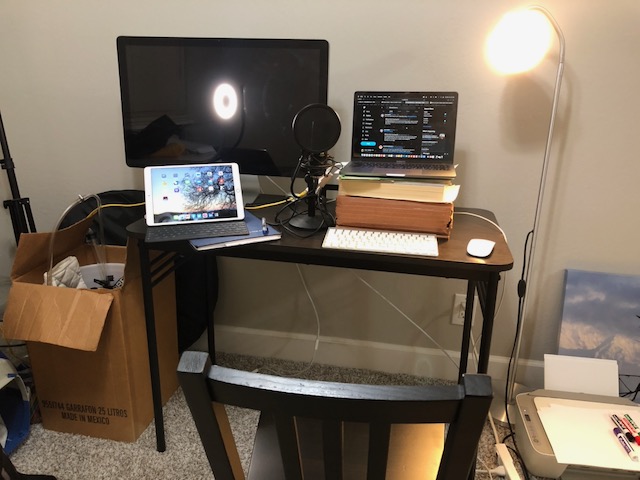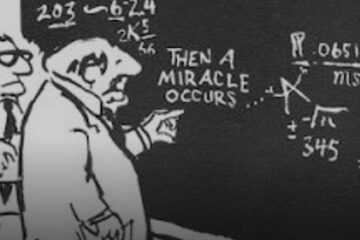Why a leader’s opinion on working from home or returning to the office shouldn’t matter
Yesterday I read an opinion piece about the health effects of working from home.
I found it a very measured and thought-provoking piece pointing out that
Some workers thrived in the remote environment… while others became less active, gained weight and reported feelings of isolation and depression.
NYT Opinion Piece by Jordan Metzl, referring to a meta study of health effects of remote work
I don’t find this surprising at all. People are different. We don’t all fit into the same clothes, listen to the same music, have the same access to healthy food or open space, or even have the same number of limbs. Most people who transitioned to working from home due to pandemic lockdowns didn’t have a reasonable home setup, proper connectivity, or sufficient IT support.

I promise.
In short, the number of variables involved is staggering. So finding that some thrived while some regressed shouldn’t really surprise anyone.
But I’m not here to discuss the research or its results. Or to take sides in the question of remote versus office work.
I’m here to talk about self-awareness.
The person who posted the opinion to social media (someone I don’t personally know) captioned it with her own opinion: being in the office with coworkers is best, and people who say otherwise make her sad.
I found the comments on her post particularly illuminating as to human behavior.
Nearly every comment (and rebuttal to each comment) was some version of “I am more productive working from home” or “I need the social connection of the office.”
Commenters tended to focus on specifics of their situation that mattered to them: having to endure a terrible commute, say, or missing out on hall-talk with colleagues. Being able to spend more time with family or pets, or enjoying the social camaraderie of a tight-knit workplace.
Whatever specific aspect of remote or in-person work they chose, however, they presented it in a way that implied that literally everyone else feels the same way.
This may be an occurrence of something called the false consensus effect.
Not everyone sees things as you do
The original poster ended her post by saying that working from home was “sitting alone all day looking at zoom.”
My immediate reaction was that if you’re sitting alone all day looking at zoom, then you’re not actually working from home. You’re looking at zoom. And if you’re looking at zoom, then you’ve probably got other people in the same zoom meeting with you. And if you are in the same zoom with other people, how is that so different from being in an office with those same people?
I think that’s an interesting question because if I actually listen to the answer, I’d learn something really valuable about that person’s work style and needs.
Why does zoom provide me sufficient human connection when it does not for her? Why does an in-person connection fuel her but feel like interruption to me?
Again, this should not surprise any of us. People are different.
This is very important for the people in charge
When the pandemic lockdowns were first beginning to show signs of easing, I was one member of a four-person executive team. We got together in person one day a week while the rest of the organization was fully remote.
In one of these meetings, another member of the team said, “It’s so hard working remotely. Everyone can’t wait to come back to the office. It will be so much better when we’re all together again.”
They said this as if it were an unassailable truth, universally acknowledged. Another executive agreed wholeheartedly.
I could have let it slide. We weren’t opening up any time soon, so why fight it?
But here were two of the senior executives projecting their own perspective onto the entirety of the organization. It didn’t feel like arrogance or tyranny. It felt like naïve enthusiasm which might end up putting some employees off… especially if that kind of language began to permeate everyday work.
So I challenged the statement. And that led to an interesting dialog about being more aware of and sensitive to every individual’s needs and styles.
It’s not always easy, but it’s your job
Leadership used to mean that you were in charge, and people did what you said whether they liked it or not. Employees existed to do what the boss said, how the boss said to do it.
FedEx founder Frederick Smith sounded the death knell on that type of leadership when he put more decision-making in the hands of employees.
“When people are placed first they will provide the highest possible service, and profits will follow”.
Frederick Smith, FedEx founder
He wasn’t the first to think of it, of course, but the origin stories of FedEx’s rise are legend, studied closely by a generation of business school grads. Now, employees and emerging leaders expect this type of leadership.
Leaders must get the best out of their people not with threats and punishment, but with a broad set of tools and techniques for motivating, engaging, and empowering a diversity of individuals.
One of those tools is self-awareness. Not only do you need to know your people and what drives each of them, but you need to understand yourself well enough to recognize when you’re getting in your own way.
That means stopping yourself—or allowing someone else to stop you—when you begin to act as if everyone else in the company thinks the same way you do.
Drop me a line if you want some help or resources on how to lead more effectively in today’s business environment.



0 Comments